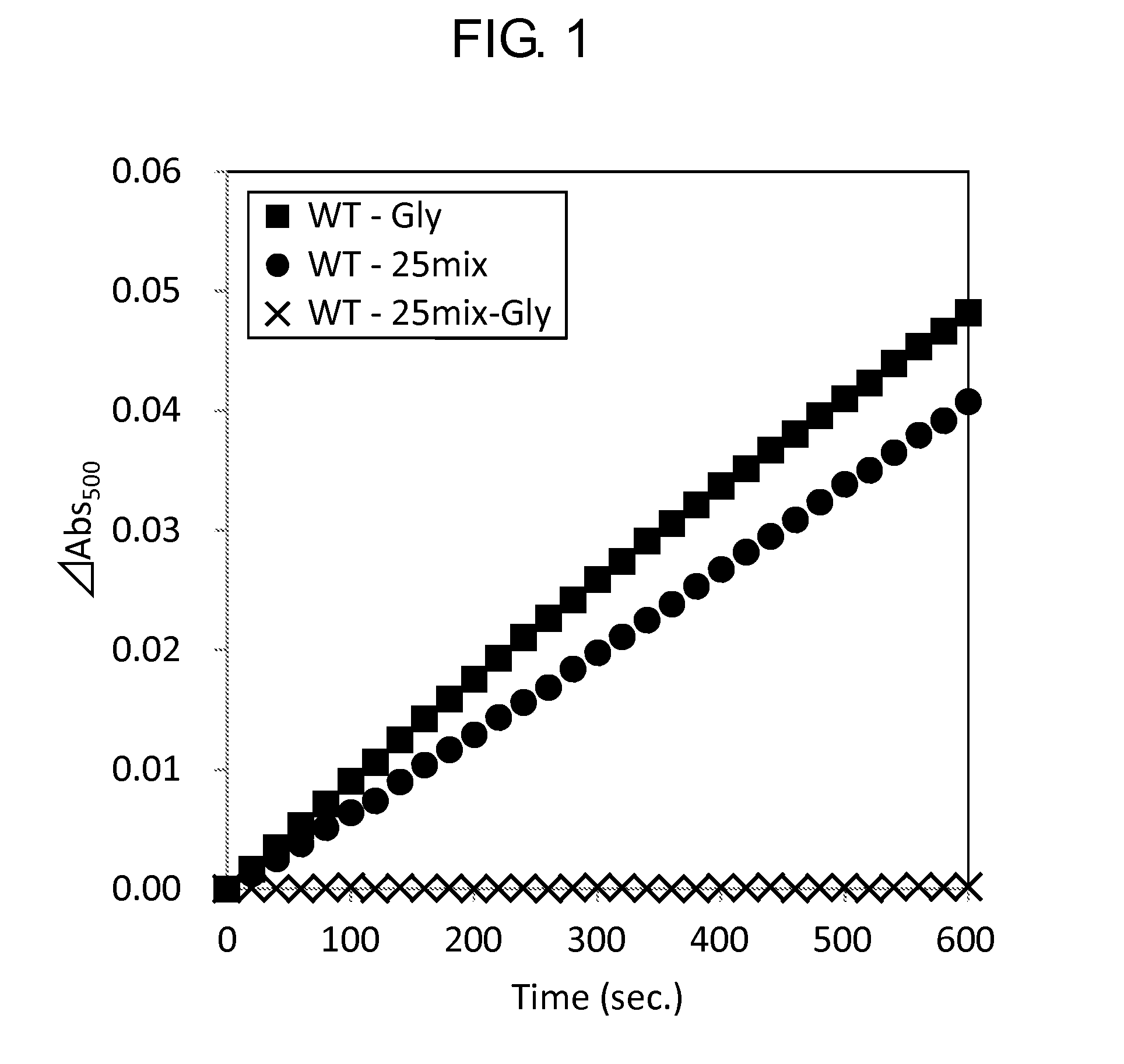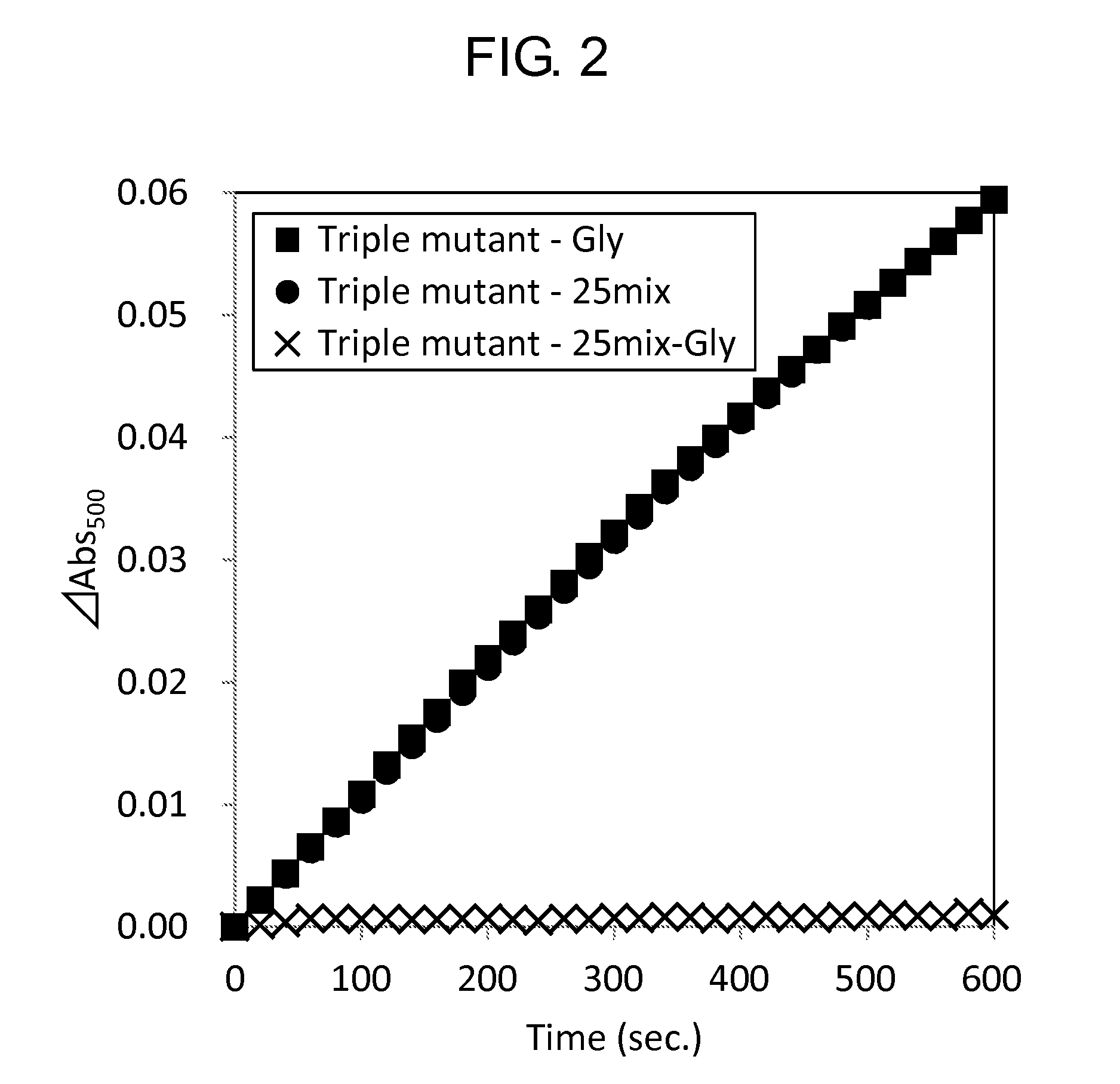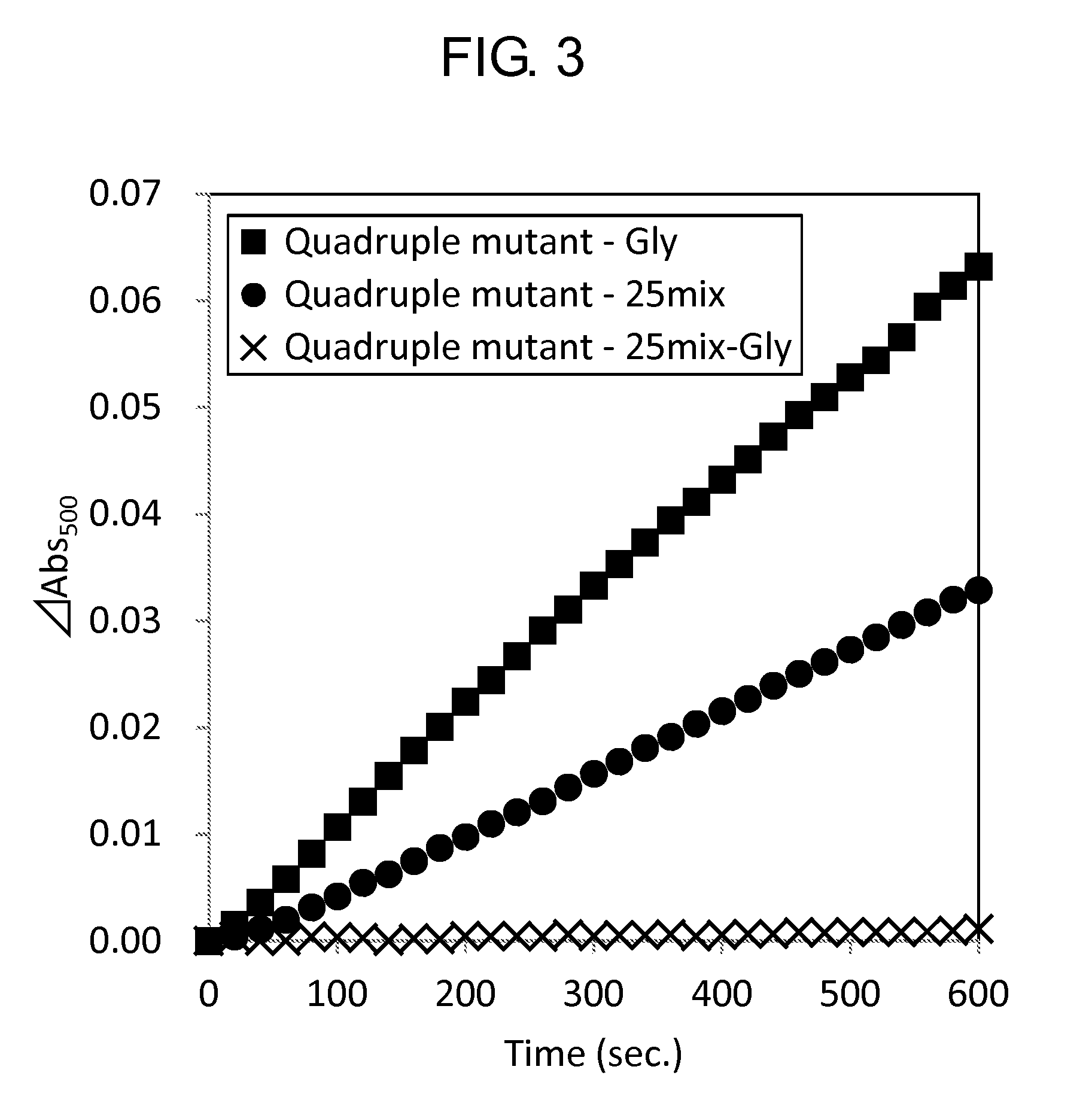Modified Glycine Oxidase
a glycine oxidase and oxidase technology, applied in the field of modified glycine oxidase, can solve the problems of low activity and stability of oxidases, inability to practically measure glycine, and lack of enzymes capable of practically measuring glycin
- Summary
- Abstract
- Description
- Claims
- Application Information
AI Technical Summary
Benefits of technology
Problems solved by technology
Method used
Image
Examples
example 1
Synthesis of GlyOX Using Cell-Free Synthesis System and Purification of GlyOX
[0148]A histidine tag and a TEV protease recognition sequence were fused via a 2-step PCR to an N-terminal side of a wild-type GlyOX gene derived from Bacillus subtilis 168 strain, or an objective mutant gene, and used as a template to prepare linear DNA that has been introduced with the objective mutation. A protein was synthesized in a cell-free synthesis reaction system derived from Escherichia coli using this DNA as the template. A supernatant fraction obtained after centrifugation of a product synthesized by a dialysis method for 6 hours using 1 mL of a reaction scale was purified with histidine tag affinity for Ni Sepharose High Performance (GE Healthcare Japan) to yield an elution fraction. Subsequently, the possible presence of a protein identified as the objective enzyme was determined by SDS-PAGE and staining using SYPRO ORANGE protein gel stain (Life Technologies Japan Ltd.). The protein was quan...
example 2
Measurement of Activity
[0153]Activity of the wild-type GlyOX and the mutant GlyOX synthesized in Example 1 was evaluated by the following procedure. First, the following reaction solutions A and B were prepared.
[0154]Reaction solution A: 4 mM phenol, 100 mM potassium phosphate, pH 8.0
[0155]Reaction solution B: 50 mM 4-aminoantipyrine, 500 U / mL peroxidase
[0156]Subsequently, using a 96 well microplate, 49 μL of the reaction solution A, 1 μL of the reaction solution B, 10 μL of 2.5 mM Gly or 100 mM Gly, 20 μL of ultrapure water, and 20 μL of 0.5 mg / mL GlyOX were mixed to prepare a solution, and the change of absorbance at a wavelength of 500 nm of the solution at 25° C. after 3 minutes was measured using a microplate reader (SpectraMax M2e, Molecular Device Japan). The activity of each mutant GlyOX was shown as a ratio relative to the activity of the wild-type GlyOX in Tables 7 and 8. Each value was calculated from a mean value when the experiment was performed three times for the same...
example 3
Evaluation of Stability
[0157]Stability of the wild-type enzyme and the mutant enzyme synthesized in Example 1 was evaluated by the following procedure. 0.5 mg / mL of GlyOX was dispensed in a microtube and incubated at 4° C., 40° C., 50° C. and 60° C. for one hour. Subsequently, each enzyme solution was reacted under the same conditions as in Example 2 except that 100 mM Gly substrate solution was added. An activity was determined from the change of absorbance 10 minutes after starting the reaction. The stability was evaluated by determining the remaining activity as a ratio relative to the activity of an enzyme solution incubated at 4° C. The results are shown in Tables 9 and 10. Each value for GlyOX having mutated L301 in Table 9 was calculated from a mean value when the experiment was performed twice for the same sample. Each value for GlyOX other than those above was calculated from a mean value when the experiment was performed three times for the same sample. Table 9 and 10 sho...
PUM
| Property | Measurement | Unit |
|---|---|---|
| Concentration | aaaaa | aaaaa |
| Thermal stability | aaaaa | aaaaa |
Abstract
Description
Claims
Application Information
 Login to View More
Login to View More - R&D
- Intellectual Property
- Life Sciences
- Materials
- Tech Scout
- Unparalleled Data Quality
- Higher Quality Content
- 60% Fewer Hallucinations
Browse by: Latest US Patents, China's latest patents, Technical Efficacy Thesaurus, Application Domain, Technology Topic, Popular Technical Reports.
© 2025 PatSnap. All rights reserved.Legal|Privacy policy|Modern Slavery Act Transparency Statement|Sitemap|About US| Contact US: help@patsnap.com



